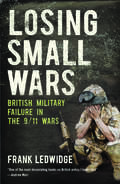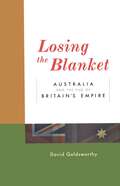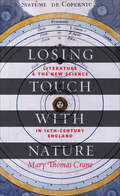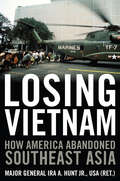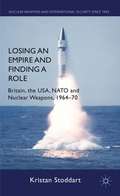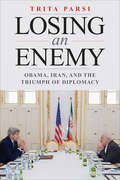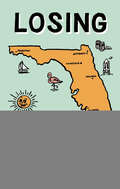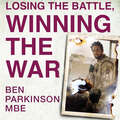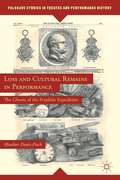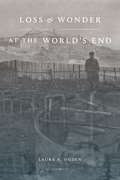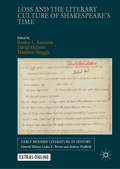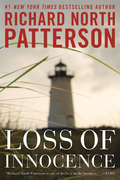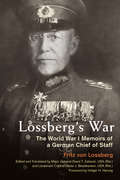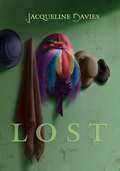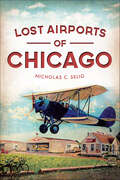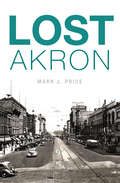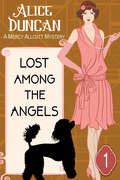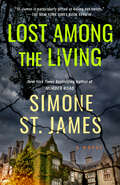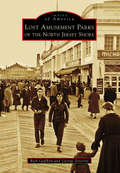- Table View
- List View
Losing Small Wars: British Military Failure in the 9/11 Wars
by Frank LedwidgePartly on the strength of their apparent success in insurgencies such as Malaya and Northern Ireland, the British armed forces have long been perceived as world class, if not world beating. However, their recent performance in Iraq and Afghanistan is widely seen as--at best--disappointing; under British control Basra degenerated into a lawless city riven with internecine violence, while tactical mistakes and strategic incompetence in Helmand Province resulted in heavy civilian and military casualties and a climate of violence and insecurity. In both cases the British were eventually and humiliatingly bailed out by the US army. In this thoughtful and compellingly readable book, Frank Ledwidge examines the British involvement in Iraq and Afghanistan, asking how and why it went so wrong. With the aid of copious research, interviews with senior officers, and his own personal experiences, he looks in detail at the failures of strategic thinking and culture that led to defeat in Britain's latest "small wars. " This is an eye-opening analysis of the causes of military failure, and its enormous costs.
Losing The Blanket: Australia and the end of Britain's Empire
by David GoldsworthyWhen Britain's sprawling empire wound down with unexpected speed in the 1960s, Australia lost a comforting 'security blanket'. We had to struggle to re-establish and protect ourselves in a volatile and threatening world. Australia's interests in empire had taken many forms-strategic, economic, cultural and psychological. Indeed Australia had used British experience as a template for its own 'mini-imperialism', in Papua and New Guinea for example. The most important connnections between Britain's imperial interests and Australia's regional ones were in Southeast Asia, but they extended to the Indian and Pacific oceans and even to Africa. The effects of the end of empire upon Australia's external relations have tended to be eclipsed by historians' emphasis on Cold War imperatives and Australia's consequent alignment with the United States. Losing the Blanket rights the balance by showing how Australia's foreign policy during the 1950s and 1960s was affected by the end of empire. Under the thirty-year rule, vital primary sources in both Britain and Australia are now accessible. They reveal the effects of post-imperialism upon Australian policies in key areas such as defence planning in Southeast Asia, the politics of the Commonwealth, European union, Australia's own colonial policy, and relations with Britain itself. David Goldsworthy's account is both clear and thorough. As first Menzies and then Holt looked to protect Australia's interests, the groundwork was laid for our involvement in Vietnam and for the pattern of Australia's foreign relations today.
Losing Touch with Nature: Literature and the New Science in Sixteenth-Century England
by Mary Thomas CraneThe rise of modern science stirred up a mix of unease and exhilaration that profoundly influenced early modern English literature.During the scientific revolution, the dominant Aristotelian picture of nature, which cohered closely with common sense and ordinary perceptual experience, was completely overthrown. Although we now take for granted the ideas that the earth revolves around the sun and that seemingly solid matter is composed of tiny particles, these concepts seemed equally counterintuitive, anxiety provoking, and at odds with our ancestors’ embodied experience of the world. In Losing Touch with Nature, Mary Thomas Crane examines the complex way that the new science’s threat to intuitive Aristotelian notions of the natural world was treated and reflected in the work of Edmund Spenser, Christopher Marlowe, William Shakespeare, and other early modern writers. Crane breaks new ground by arguing that sixteenth-century ideas about the universe were actually much more sophisticated, rational, and observation-based than many literary critics have assumed. The earliest stages of the scientific revolution in England were most powerfully experienced as a divergence of intuitive science from official science, causing a schism between embodied human experience of the world and learned explanations of how the world works. This fascinating book traces the growing awareness of that epistemological gap through textbooks and natural philosophy treatises to canonical poetry and plays, presciently registering and exploring the magnitude of the human loss that accompanied the beginnings of modern science.
Losing Vietnam: How America Abandoned Southeast Asia (Battles and Campaigns)
by Major General Ira A. Hunt Jr.An intelligence officer stationed in Southeast Asia offers a &“detailed, insightful, documented, and authentic account&” of US policy failure in the region (Lewis Sorley, author of Westmoreland). In the early 1970s, the United States began to withdraw combat forces from Southeast Asia. Though the American government promised to support the South Vietnamese and Cambodian forces in their continued fight against the Viet Cong, the funding was drastically reduced over time. The strain on America&’s allies in the region was immense, as Major General Ira Hunt demonstrates in Losing Vietnam. As deputy commander of the United States Support Activities Group Headquarters (USAAG) in Nakhon Phanom, Thailand, Hunt received all Southeast Asia operational reports, reconnaissance information, and electronic intercepts, placing him at the forefront of military intelligence and analysis in the area. He also met frequently with senior military leaders of Cambodia and South Vietnam, contacts who shared their insights and gave him personal accounts of the ground wars raging in the region. In Losing Vietnam, Major Hunt details the catastrophic effects of reduced funding and of conducting "wars by budget." This detailed and fascinating work highlights how analytical studies provided to commanders and staff agencies improved decision making in military operations. By assessing allied capabilities and the strength of enemy operations, Hunt effectively demonstrates that America's lack of financial support and resolve doomed Cambodia and South Vietnam to defeat.
Losing an Empire and Finding a Role
by Kristan StoddartThis book sheds fresh light on developments in British nuclear weapons policy between October 1964, when the Labour Party came back into power under Harold Wilson following a thirteen year absence, and June 1970 when the Conservative government of Edward Heath was elected.
Losing an Enemy: Obama, Iran, and the Triumph of Diplomacy
by Trita ParsiThe definitive book on President Obama&’s historic nuclear deal with Iran from the U.S. foreign policy expert and acclaimed author of Treacherous Alliance. In Losing an Enemy, Middle East policy expert Trita Parsi examines President Obama&’s strategy toward Iran&’s nuclear program and reveals how the historic agreement of 2015 broke the persistent stalemate in negotiations that had blocked earlier efforts. The Joint Comprehensive Plan of Action, commonly known as the Iran nuclear deal, accomplished two major feats in one stroke: it averted the threat of war with Iran and prevented the possibility of an Iranian nuclear bomb. Parsi advised the Obama White House throughout the talks and had access to decision-makers and diplomats on the U.S. and Iranian sides alike. With his unique insight, he examines every facet of a triumph that could become as important and consequential as Nixon&’s rapprochement with China. Drawing from more than seventy-five in-depth interviews with key decision-makers, including Iran's Foreign Minister Javad Zarif and U.S. Secretary of State John Kerry, this is the first authoritative account of President Obama&’s signature foreign policy achievement. "A detailed and gripping account of the 22 months of negotiations over Iran&’s nuclear program that resulted in the 2015 deal."—John Waterbury, Foreign Affairs
Losing in Gainesville
by Brian CostelloThis comedic slacker novel tracks a community of stoners, musicians, and regular dudes losing in every sense of the word.ed from himself. A rock-and-roll fable about the secret lives of the unsatisfied."-Kirkus Reviews"Costello describes suburban absurdities in teeming detail, approaching the self-aware gross-out humor of Tromaville: tumbling forward with the rushing momentum of Kerouac's prose. Nineties counterculture-emo bands, riot grrls, shit jobs, sleeping on floors, warm beer and cold pizza-often provides the punch line. Though funny and poking fun, Costello remains sympathetic to the awkwardness and ambivalence that drives young people, feeling trapped, to struggle to express themselves: that beautiful, life-affirming cycle of broke kids starting bands."-Tim Kinsella, Joan of Arc front man, author of Let Go and Go On and On and The Karaoke Singer's Guide to Self Defense"A bittersweet, twenty-something, rock-and-rolling tale of angst and longing, riffing on art and the meaning of it all amidst the banality and beauty of 90s Florida in a fever dream portrait of the artists as not-so-young punk rockers."-Eric Charles May, author of Bedrock Faith
Losing the Battle, Winning the War: How we can all defy the odds we're given
by Ben Parkinson'A great and inspiring book from Doncaster's bravest son. Read it in a day' - Jeremy Clarkson 'Ben is the embodiment of positive thinking. What he has achieved, in large part through willpower, is nothing short of miraculous. An inspiration to us all' - Ant Middleton The story of Ben Parkinson MBE, the most injured soldier to have survived Afghanistan---What were you doing when you were 22? Where were you in the world? What did you want to do with your life? Ben Parkinson was a 6'4" Paratrooper. He was in Afghanistan fighting for his country. He wanted to always be a soldier, to be a father and to get home in one piece. But we don't always get what we want. So the question is: how do we react when that happens? Easy: You find something new to fight for.Ben Parkinson MBE is an inspiration to everyone. He suffered 37 injuries when his Land Rover hit a mine in Helmand in 2006, including brain damage, breaking his back and losing both his legs. This book follows the story of what led him to that moment his life changed forever - and what happened next. Doctors didn't think Ben could survive the trauma - then they didn't think he would wake up, or talk again, or walk again. Time after time, Ben pushed the ceiling on what was possible, going on to carry the Olympic flame in 2012 and receiving an MBE for the enormous feats he has undertaken for charity.What he has achieved in the face of adversity - for others as well as for himself - is nothing short of a miracle. Nerve-wracking, heart-warming and full of classic soldier's humour, Losing the Battle, Winning the War is a book you'll be thinking about long after the last page. 'Ben Parkinson is my hero. His story is one of immeasurable courage and character, a testament to the extraordinary resilience of the human spirit' Dan Jarvis MP, author of Long Way Home
Losing the Battle, Winning the War: How we can all defy the odds we're given
by Ben Parkinson'Ben is the embodiment of positive thinking. What he has achieved, in large part through willpower, is nothing short of miraculous. An inspiration to us all' - Ant Middleton 'A great and inspiring book from Doncaster's bravest son. Read it in a day' - Jeremy Clarkson The story of Ben Parkinson MBE, the most injured soldier to have survived Afghanistan---What were you doing when you were 22? Where were you in the world? What did you want to do with your life? Ben Parkinson was a 6'4" Paratrooper. He was in Afghanistan fighting for his country. He wanted to always be a soldier, to be a father and to get home in one piece. But we don't always get what we want. So the question is: how do we react when that happens? Easy: You find something new to fight for.Ben Parkinson MBE is an inspiration to everyone. He suffered 37 injuries when his Land Rover hit a mine in Helmand in 2006, including brain damage, breaking his back and losing both his legs. This book follows the story of what led him to that moment his life changed forever - and what happened next. Doctors didn't think Ben could survive the trauma - then they didn't think he would wake up, or talk again, or walk again. Time after time, Ben pushed the ceiling on what was possible, going on to carry the Olympic flame in 2012 and receiving an MBE for the enormous feats he has undertaken for charity.What he has achieved in the face of adversity - for others as well as for himself - is nothing short of a miracle. Nerve-wracking, heart-warming and full of classic soldier's humour, Losing the Battle, Winning the War is a book you'll be thinking about long after the last page.
Losing the Battle, Winning the War: The story of the most injured soldier to have survived Afghanistan
by Ben Parkinson'A great and inspiring book from Doncaster's bravest son. Read it in a day' - Jeremy Clarkson 'Ben is the embodiment of positive thinking. What he has achieved, in large part through willpower, is nothing short of miraculous. An inspiration to us all' - Ant Middleton The story of Ben Parkinson MBE, the most injured soldier to have survived Afghanistan---What were you doing when you were 22? Where were you in the world? What did you want to do with your life? Ben Parkinson was a 6'4" Paratrooper. He was in Afghanistan fighting for his country. He wanted to always be a soldier, to be a father and to get home in one piece. But we don't always get what we want. So the question is: how do we react when that happens? Easy: You find something new to fight for.Ben Parkinson MBE is an inspiration to everyone. He suffered 37 injuries when his Land Rover hit a mine in Helmand in 2006, including brain damage, breaking his back and losing both his legs. This book follows the story of what led him to that moment his life changed forever - and what happened next. Doctors didn't think Ben could survive the trauma - then they didn't think he would wake up, or talk again, or walk again. Time after time, Ben pushed the ceiling on what was possible, going on to carry the Olympic flame in 2012 and receiving an MBE for the enormous feats he has undertaken for charity.What he has achieved in the face of adversity - for others as well as for himself - is nothing short of a miracle. Nerve-wracking, heart-warming and full of classic soldier's humour, Losing the Battle, Winning the War is a book you'll be thinking about long after the last page. 'Ben Parkinson is my hero. His story is one of immeasurable courage and character, a testament to the extraordinary resilience of the human spirit' Dan Jarvis MP, author of Long Way Home
Losing the Empress: A Personal Journey
by David CreightonThe Empress of Ireland’s last voyage ended on May 29, 1914, when she was rammed by a Norwegian coal-carrier in a fog patch on the St. Lawrence River near Rimouski. For David Creighton, her voyage still continues. In Losing the Empress, Creighton delves into the lives of his grandparents - Salvation Army officers who were lost on the Empress - and the lives of their five orphaned children who would soon be plunged into World War I. His discoveries reveal amazing details about the Empress, which sank in fourteen minutes with a greater loss of life than the Titanic disaster. Shipwreck nostalgia, last voyage dinners, Salvationists, the British Empire and the world wars fought to preserve it; everything comes into focus when the author joins Titanic discoverer Robert Ballard on a film shoot at the sunken liner’s site. Losing the Empress lyrically traces a personal journey into the past and into the future.
Loss and Cultural Remains in Performance
by Heather Davis-FischIn 1845, John Franklin's Northwest Passage expedition disappeared. The expedition left an archive of performative remains that entice one to consider the tension between material remains and memory and reflect on how substitution and surrogation work alongside mourning and melancholia as responses to loss.
Loss and Wonder at the World’s End
by Laura A. OgdenIn Loss and Wonder at the World's End, Laura A. Ogden brings together animals, people, and things—from beavers, stolen photographs, lichen, American explorers, and birdsong—to catalog the ways environmental change and colonial history are entangled in the Fuegian Archipelago of southernmost Chile and Argentina. Repeated algal blooms have closed fisheries in the archipelago. Glaciers are in retreat. Extractive industries such as commercial forestry, natural gas production, and salmon farming along with the introduction of nonnative species are rapidly transforming assemblages of life. Ogden archives forms of loss—including territory, language, sovereignty, and life itself—as well as forms of wonder, or moments when life continues to flourish even in the ruins of these devastations. Her account draws on long-term ethnographic research with settler and Indigenous communities; archival photographs; explorer journals; and experiments in natural history and performance studies. Loss and Wonder at the World's End frames environmental change as imperialism's shadow, a darkness cast over the earth in the wake of other losses.
Loss and the Literary Culture of Shakespeare’s Time (Early Modern Literature in History)
by Matthew Steggle Roslyn L. Knutson David McInnisAs early modernists with an interest in the literary culture of Shakespeare’s time, we work in a field that contains many significant losses: of texts, of contextual information, of other forms of cultural activity. No account of early modern literary culture is complete without acknowledgment of these lacunae, and although lost drama has become a topic of increasing interest in Shakespeare studies, it is important to recognize that loss is not restricted to play-texts alone. Loss and the Literary Culture of Shakespeare’s Time broadens the scope of the scholarly conversation about loss beyond drama and beyond London. It aims to develop further models and techniques for thinking about lost plays, but also of other kinds of lost early modern works, and even lost persons associated with literary and theatrical circles. Chapters examine textual corruption, oral preservation, quantitative analysis, translation, and experiments in “verbatim theater”, plus much more.
Loss of Innocence
by Richard North PattersonNumber one New York Times best-selling author Richard North Patterson, author of more than twenty novels, including Degree of Guilt and Silent Witness, returns with a sweeping family drama of dark secrets and individual awakenings. Loss of Innocence, the second book in the Blaine trilogy, "in one life of the 1960s, symbolizes a movement that keeps changing all our lives" (Gloria Steinem) in "a richly-layered look at the loss of innocence not only among his characters but that which America lost as a nation." (Martha's Vineyard Times) "An extraordinary novel--profound, emotionally involving and totally addictive," said actor and author Stephen Fry, "this may be Richard North Patterson's best work."In 1968 America is in turmoil, engulfed in civil unrest and in the midst of an unpopular war. Yet for Whitney Dane--spending the summer of her twenty-first year on Martha's Vineyard, planning a September wedding to her handsome and equally privileged fiance--life could not be safer, nor the future more certain. Educated at Wheaton, soon to be married, and the youngest daughter of the patrician Dane family, Whitney has everything she has ever wanted, and is everything her doting father, Wall Street titan Charles Dane, wants her to be: smart, sensible, predictable. Nonetheless, Whitney's nascent disquiet about society and her potential role in it is powerfully stimulated by the forces transforming the nation. The Vineyard's still waters are disturbed by the appearance of Benjamin Blaine, an underprivileged, yet fiercely ambitious and charismatic figure who worked as an aide to the recently slain Bobby Kennedy. Ben's presence accelerates Whitney's growing intellectual independence, inspires her to question long-held truths about her family, and stirs her sexual curiosity. It also brings deep-rooted tensions within the Dane clan to a dangerous head. Soon, Whitney's future seems far less secure, and her ideal family far more human, than she ever could have suspected. An acknowledged master of the courtroom thriller, Patterson's Blaine trilogy, a bold and surprising departure from his past novels, is a complex family drama pulsing with the tumult of the time and "dripping with summer diversions, youthful passion and ideals, class tensions, and familial disruptions." (Library Journal)From the Hardcover edition.
Lossberg's War: The World War I Memoirs of a German Chief of Staff (Foreign Military Studies)
by Fritz von Lossberg&“This book is a work of detail and scholars can now envision the campaigns and battles of the First World War from a high-level German perspective.&” —Journal of Military History Gen. Fritz von Lossberg (1868-1942) directed virtually all the major German defensive battles on the Western Front during the First World War. Hailed as &“the Lion of the Defensive,&” he was an extremely influential military tactician and, unlike many other operations officers of his era, was quick to grasp the changes wrought by technology. Now available for the first time in English, Lossberg&’s memoir explains how he developed, tested, and implemented his central principles—flexibility, decentralized control, and counterattack—which were based on a need to adapt to shifting conditions on the battlefield. Lossberg first put his theory of elastic defense combined with defense-in-depth into practice during the Battle of Arras (April-May 1917), where it succeeded. At the Battle of Passchendaele (June-November 1917), his achievements on the field proved the feasibility of his strategy of employing a thinly manned front line that minimized the number of soldiers exposed to artillery fire. Lossberg&’s tactical modernizations have become essential components of army doctrine, and Lossberg&’s War: The World War I Memoirs of a German Chief of Staff will take readers inside the mind of one of the most significant military innovators of the twentieth century. &“Make no mistake about it, the appearance of this book is one of the most significant Great War publishing events of the year. It deserves to be on the shelf of every serious student of this titanic conflict.&” —Stand To!
Lost
by Jacqueline DaviesIn 1911 New York, sixteen-year-old Essie Rosenfeld must stop taking care of her irrepressible six-year-old sister when she goes to work at the Triangle Waist Company, where she befriends a missing heiress who is in hiding from her family.
Lost Aiken County (Lost)
by Alexia Jones HelsleyFrom a home to the fierce Westo tribe to a hub of the equestrian industry, Aiken County has had a huge influence on South Carolina. And some of the structures that mark that history have disappeared. More than two hundred years ago, the Horse Creek Chickasaw Squirrel King held court near North Augusta. The first locomotive built for public transportation, the "Best Friend" from Charleston to Hamburg, first ran in the area. The home of noted businessman Richard Flint Howe hosted both the Duke and Duchess of Windsor and students of the University of South Carolina Aiken. William Gregg and the Graniteville Mill helped shape the textile industry in the state. Author Alexia Jones Helsley details the lost history of Aiken County.
Lost Airmen: The Epic Rescue of WWII U.S. Bomber Crews Stranded Behind Enemy Lines
by Charles E. Stanley Jr.Late in 1944, thirteen U.S. B-24 bomber crews bailed from their cabins over the Yugoslavian wilderness. Bloodied and disoriented after a harrowing strike against the Third Reich, the pilots took refugee with the Partisan underground. But the Americans were far from safety. Holed up in a village barely able to feed its citizens, encircled by Nazis, and left abandoned after a team of British secret agents failed to secure their escape, the airmen were left with little choice. It was either flee or be killed. In The Lost Airmen, Charles Stanely Jr. unveils the shocking true story of his father, Charles Stanely-and the eighteen brave soldiers he journeyed with for the first time. Drawing on over twenty years of research, dozens of interviews, and previously unpublished letters, diaries, and memoirs written by the airmen, Stanley recounts the deadly journey across the blizzard-swept Dinaric Alps during the worst winter of the Twentieth Century-and the heroic men who fought impossible odds to keep their brothers in arms alive.
Lost Airports of Chicago (Lost)
by Nicholas C. SeligTo book a ride on the "World's Shortest Airline" or learn aerial stunts from the redheaded widow of Lawrence Avenue, you've got to go through the airports buried beneath the housing developments and shopping malls of Chicagoland. Many of these airports sprang up after World War I, when training killed more pilots than combat, and the aviation pioneers who developed Chicago's flying fields played a critical role in getting the nation ready to dare the skies in World War II. Author Nick Selig has rolled wheels on his fair share of Chicago's landing strips but faces an entirely new challenge in touching down in places being swallowed by a city and forgotten by history.
Lost Akron (Lost)
by Mark J. PriceFrom a prehistoric locale like the Big Falls of the Cuyahoga River to the cavernous 1970s majesty of the Coliseum, explore the places that have melted away in Akron's changing landscape. Remember M. O'Neil Company? Akron Times-Press? The North Hill Viaduct? WAKR-TV? Norka Soda? Rolling Acres Mall? These are icons that all defined the city and its people. For those who live in Akron, for those who have moved away and for those too young to remember the Rubber City's heyday, author Mark J. Price takes a fascinating look at fifty vanished landmarks from Akron's past.
Lost Among the Angels: Historical Cozy Mystery (Mercy Allcutt Mystery #1)
by Alice DuncanLocal Secretary Foils Murderer in Lost Among the Angels, a Historical Cozy Mystery from Alice Duncan1920s, Los Angeles, CAMercy Allcutt is ecstatic to move to California where she knows she’ll learn all about life and–to her Boston blue-blood family's horror--get a JOB; no woman in the Allcutt family has ever actually held a JOB.Mercy lands employment as secretary to Ernie Templeton, Private Investigator. Mercy’s thrilled, and she’s sure, with time and help, she’ll become an invaluable asset to Ernie’s business.Ernie doesn't yet share Mercy's sunny optimism, but nothing tests the resolve of a new employee quite like murder.Publisher Note: Readers who enjoy cozy mysteries in historical settings are sure to appreciate the Mercy Allcutt series set in 1920s Los Angeles, California. No vulgarity or explicit sex for those who appreciate a clean and wholesome read."Mercy is a pip. I laughed all through this book and stayed up until 4:00 in the morning to finish it. I was still laughing when I turned out the light. Not a bad way to end one day and start another." ~Patricia Browning"This gem reminded me of the old Dick Tracy comic strips (that I avidly read as a child), as well as of the black and white PI movies we all recall with glee. The story takes place in 1926, Los Angeles. I found myself immersed in the first few pages. Author Alice Duncan either did a lot of research or grew up on stories of the era. Each character has a unique personality. The characters all dress the parts, all the way down to the bobbed hairstyle, and speak slang. Don't worry; you won't be lost. This book is headed directly to my "KEEPER" shelf. Highly recommended!" ~ Detra Fitch (Huntress Reviews)"I read Lost Among the Angels in one sitting and found it wonderful and so enjoyable. It is a fast-paced, exciting story and Mercy Allcutt is a terrific sleuth. I can't wait to spend more time with Mercy!" ~ Rob WalkerThe Mercy Allcutt Mystery SeriesLost Among the AngelsAngels FlightFallen AngelsAngels of MercyThanksgiving Angels
Lost Among the Living
by Simone St. JamesFrom the New York Times bestselling author of Murder Road comes a gripping novel that &“is the perfect blend of history and mystery, with a little paranormal activity and romance thrown in for the ride&” (Suspense Magazine). England, 1921. Three years after her husband, Alex, disappeared, shot down over Germany, Jo Manders still mourns his loss. Working as a paid companion to Alex's wealthy, condescending aunt, Dottie Forsyth, Jo travels to the family&’s estate in the Sussex countryside. But there is much she never knew about her husband&’s origins…and the revelation of a mysterious death in the Forsyths&’ past is just the beginning… All is not well at Wych Elm House. Dottie's husband is distant, and her son was grievously injured in the war. Footsteps follow Jo down empty halls, and items in her bedroom are eerily rearranged. The locals say the family is cursed, and that a ghost in the woods has never rested. And when Jo discovers her husband&’s darkest secrets, she wonders if she ever really knew him. Isolated in a place of deception and grief, she must find the truth or lose herself forever. And then a familiar stranger arrives at Wych Elm House…
Lost Amusement Parks of New York City: Beyond Coney Island (Lost Ser.)
by Wesley Gottlock Barbara GottlockA historical tour of fun and frolic in the five boroughs—including photos from the good old days. Coney Island is an iconic symbol of turn-of-the-century New York—but many other amusement parks have thrilled the residents of the five boroughs. Strategically placed at the end of trolley lines, railways, public beaches, and waterways, these playgrounds for the rich and poor alike first appeared in 1767. From humble beginnings, they developed into huge sites like Fort George, Manhattan&’s massive amusement complex. Each park was influenced by the culture and eclectic tastes of its owners and patrons—from the wooden coasters at Staten Island&’s Midland Beach to beer gardens on Queens&’ North Beach and fireworks blasting from the Bronx&’s Starlight Park. As real estate became more valuable, these parks disappeared. With this historical tour, you can rediscover the thrills of the past from the lost amusement parks of New York City.
Lost Amusement Parks of the North Jersey Shore (Images of America)
by George Severini Rick GeffkenThe Jersey Shore has always attracted people seeking relief from summer heat and humidity. Long before Europeans came here, the native Lenape clammed, fished, and played games on the beach and in the surf. These original people could scarcely have imagined that, by the end of the 19th century, the 120-mile-long coastline of New Jersey would be dotted with amusement parks featuring gentle kiddie car rides, terrifying roller coasters, merry-go-rounds, and fast-food emporiums. James Bradley in Asbury Park and William Sandlass Jr. in Highland Beach created mass entertainment for hundreds of thousands of people. Their seaside recreation centers, along with those in Long Branch, Bradley Beach, Pleasure Bay, and others, endured for years but are just fond and fading memories today.
